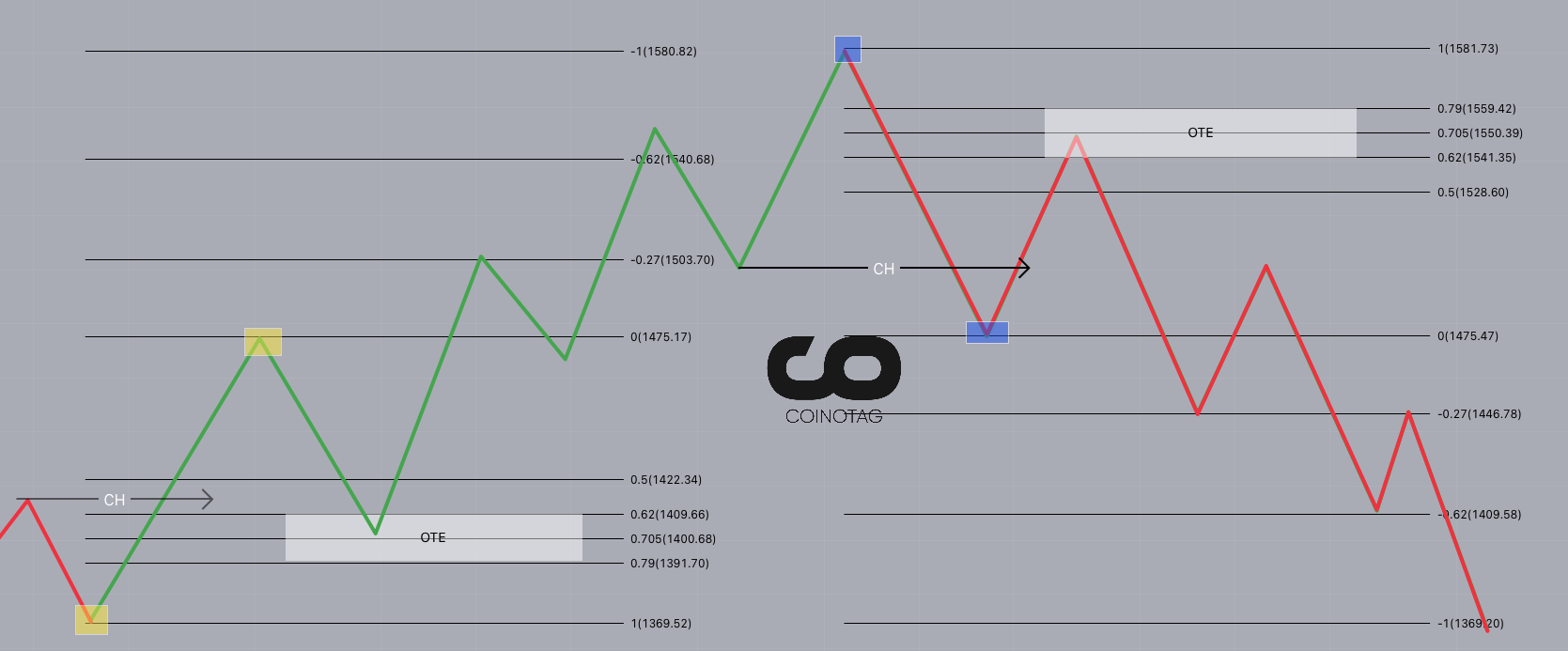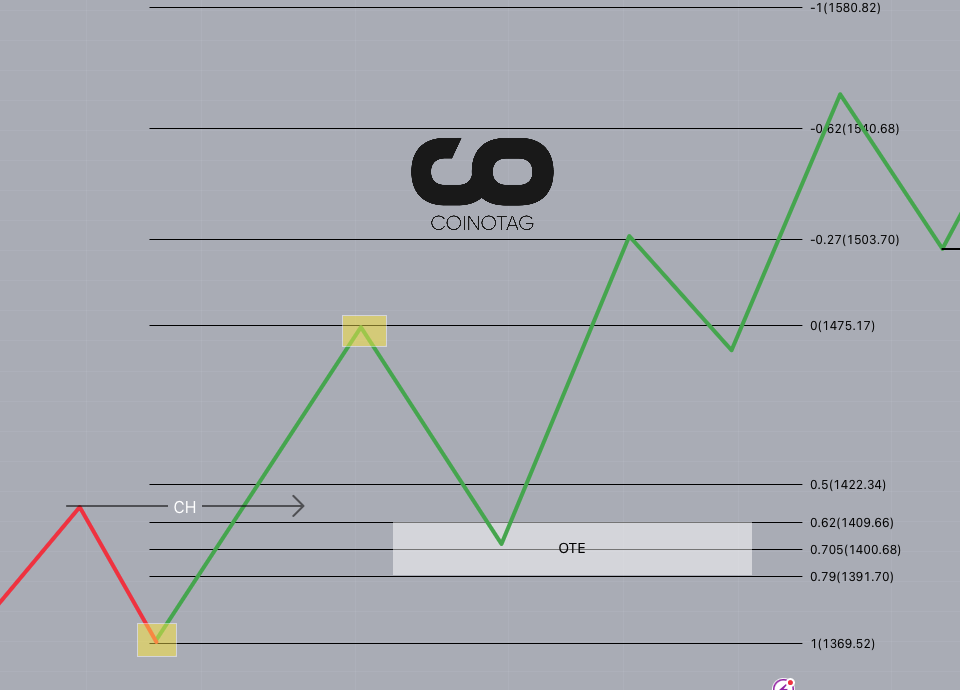- The Optimal Trade Entry (OTE) strategy helps investors open positions at the most favorable price levels.
- OTE is determined using technical analysis tools and indicators, aiming to reduce risk and increase potential profits.
- The OTE strategy involves steps such as market analysis, determining OTE levels, risk management, trade entry, and monitoring/management.
The “Optimal Trade Entry (OTE)” strategy is an approach that aims to reduce risk and increase potential gains by enabling investors to open positions at the most favorable price levels. OTE involves analyzing the market using technical analysis tools and indicators, identifying appropriate entry levels, and paying attention to risk management.
What is OTE?
“Optimal Trade Entry” (OTE) is a term used to determine the most favorable price level when entering an investment position. OTE helps investors minimize risks and maximize potential profits by entering positions at the right time and price.
OTE is typically determined using various technical analysis tools and strategies. For example, support and resistance levels, moving averages, trendlines, and other indicators can assist in identifying OTE levels.
OTE prevents investors from opening positions near the peak or trough of a price, helping them avoid overbought or oversold zones. This can enable investors to achieve high returns with low risk.
OTE strategies can be adjusted to fit different market conditions and applied to different asset classes. However, OTE strategies cannot completely eliminate risks, and it is recommended for investors to use risk management strategies.
Considerations when Using OTE:
- Market Analysis: The first step is to analyze the market. Build a foundation by examining price movements, identifying trends, and determining support/resistance levels using technical analysis tools.
- Determining OTE Levels: You can use various technical indicators to determine OTE levels. For example, Fibonacci retracement levels, moving averages, overbought/oversold indicators like RSI (Relative Strength Index), or trendlines can provide clues to identify potential entry points.
- Risk Management: Paying attention to risk management is crucial when using the OTE strategy. Setting stop-loss orders and target prices help limit potential losses. Determine your risk and consider the risk/reward ratio to determine position size.
- Trade Entry: Once the OTE levels are determined, you can enter a trade. OTE aims to open positions near overbought or oversold zones. When the price reaches the OTE level, you can execute your trade.
- Monitoring and Management: After opening a trade, it is important to monitor market movements and manage your position. Continuously monitor the market to ensure the price moves as expected. Update stop-loss levels to protect your profits and realize your gains when reaching your targets.
OTE Fibonacci Settings

Before demonstrating how OTE is used with examples, you need to adjust the Fibonacci settings for OTE on your TradingView account.
On your screen where you draw Fibonacci in TradingView, you will see a settings button next to the lock icon on the top left. Clicking the settings button will display the following screen:
Enter your Fibonacci levels accurately as shown in the image above. After entering the levels in the boxes as indicated, you need to scroll down to the sub-settings of the FIB correction.
When you scroll down to the bottom of the Fib screen, you will see the visual above. Once you have made the settings as described above, click the template section at the bottom left and click “Save as New.” Enter “OTE” in the “Save as New” field that appears.
How to Use OTE?

OTE can be used in both upward and downward trends. Before using OTE, it is important to understand the market’s trend structure.
If you do not know whether the market is in an upward or downward trend, you can read our article “What is Choch?” to learn more.
If you know whether the market is in an upward or downward trend, let’s continue with how to use OTE.
Some traders and investors follow OTE zones to make spot purchases or enter long positions in a rising market.
The OTE zone indicates the suitable entry zone to buy or sell a cryptocurrency or commodity.
Using OTE in an Upward Trend

For example, when we examine the image above, we can see that on the left side, the market enters an upward trend and makes a new higher peak.
At this point, after confirming that the traders or investors have identified that the market is in an upward trend, they draw the OTE fibs from the starting point of the upward movement (lower yellow box) to the end point of the upward movement (upper yellow box).
After drawing the OTE fibs, the OTE fib values appear on the screen. Among these values, the range of levels we specify as the appropriate entry zone is the 0.62 – 0.705 – 0.79 fib levels, as seen in the image above.
These levels are referred to as the OTE zone in an upward trend, where the price makes a correction movement towards these fib levels and then continues the upward trend.
As targets, the indicated levels of -0.27 / -0.62 / -1 are followed. Many traders take their profits at the -0.27 / -0.62 levels and close their positions.
If the trade is entered in this specified zone, the stop zone is monitored as the bottom area of the last wick movement or the bottom area of the last dip if a long position is entered from the OTE zone.
Using OTE in a Downward Trend

In the image above, the market enters a downward trend as it closes candles below the last dip zone.
In such cases, after confirming that the price has entered a downward trend, we draw the OTE fibs from the peak to the bottom point, as shown in the image above, to indicate the zone where the price can make a low peak.
After drawing the OTE fibs, the OTE fib values appear on the screen. Among these values, the range of levels we specify as an appropriate short entry zone is the 0.62 – 0.705 – 0.79 fib levels, as seen in the image above.
While these levels are used by traders for short positions, they can be used by spot investors to sell their cryptocurrencies.
As targets, the indicated levels of -0.27 / -0.62 / -1 are followed. Many traders take their profits at the -0.27 / -0.62 levels and close their positions.
The stop zone is considered slightly above the wick of the last higher peak as the stop level when entering a trade.
Considerations when Entering OTE Trades:
- When entering the OTE zone, ensure that your entry point has a support or resistance zone based on the trend. This increases the likelihood of the trade executing as expected.
- Make sure you are certain that the market structure has changed.
- Review your trades when significant news that may affect the market is released.
- After taking profits in an OTE trade, you can readjust your stop zone.


